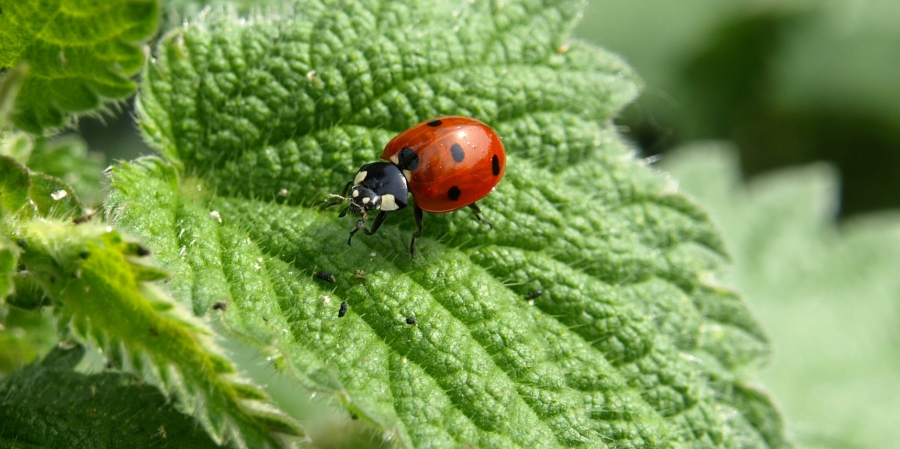

Ladybugs, also known as ladybirds, are fascinating insects that captivate our attention with their vibrant colors and distinctive spots. In this article, we will explore the intriguing world of ladybugs, delving into their biology, behavior, ecological significance, and their unique role in both folklore and modern agriculture.
**Introduction:**
Ladybugs belong to the family Coccinellidae, with over 6,000 species identified worldwide. Their small, dome-shaped bodies and contrasting colors make them easily recognizable. Most ladybugs are red or orange with black spots, although there are variations in color and pattern. The iconic appearance of these beetles has made them popular symbols in various cultures.
**Biology:**
Ladybugs undergo a fascinating metamorphosis, transitioning through four stages: egg, larva, pupa, and adult. The eggs are typically laid near colonies of aphids, one of their primary food sources. Ladybug larvae, often resembling tiny alligators, actively feed on aphids before entering the pupal stage. The adult ladybugs emerge fully formed, ready to continue their role in the ecosystem.
**Behavior:**
Ladybugs are known for their predatory nature, especially during the larval stage. They play a crucial role in controlling aphid populations, as a single ladybug can consume thousands of aphids in its lifetime. This voracious appetite makes them valuable allies for farmers and gardeners, acting as natural pest control agents.
During colder months, ladybugs seek shelter in various locations, including leaf litter and cracks in rocks. This behavior helps them survive harsh conditions, and in some cases, ladybugs may form large aggregations for warmth and protection.
**Ecological Significance:**
The ecological significance of ladybugs extends beyond their role as aphid predators. They contribute to the overall balance of ecosystems by controlling various pests, such as mites and scale insects. Ladybugs also serve as indicators of environmental health, as their presence or absence can reflect changes in habitat conditions.
The use of chemical pesticides has led to concerns about their impact on ladybug populations. By promoting natural methods of pest control, farmers and gardeners can harness the benefits of these beetles without compromising their populations.
**Cultural Significance:**
Ladybugs have woven themselves into the fabric of human culture, appearing in folklore, art, and literature. In many cultures, ladybugs are considered symbols of good luck and prosperity. Their charming appearance and beneficial behavior have contributed to a positive image, with various superstitions and beliefs surrounding these insects.
**Ladybugs in Agriculture:**
In agriculture, ladybugs have gained recognition for their valuable contributions to integrated pest management. Farmers increasingly adopt these natural predators to reduce reliance on chemical pesticides. Ladybugs not only control aphid populations but also target other harmful pests, making them a sustainable and environmentally friendly option for pest control in agriculture.
**Challenges Facing Ladybugs:**
Despite their resilience, ladybugs face challenges in modern ecosystems. Pesticide use, habitat loss, and climate change can impact their populations. Conservation efforts are underway to protect these beneficial insects and ensure their continued presence in our ecosystems.
**Conclusion:**
Ladybugs, with their charming appearance and essential ecological role, stand as remarkable insects in the natural world. From their fascinating life cycle to their significance in agriculture and culture, these beetles continue to capture our admiration and play a crucial part in maintaining the delicate balance of our ecosystems. As we navigate the complexities of modern agriculture and environmental conservation, the humble ladybug serves as a reminder of the interconnectedness of all living things and the importance of preserving biodiversity.
